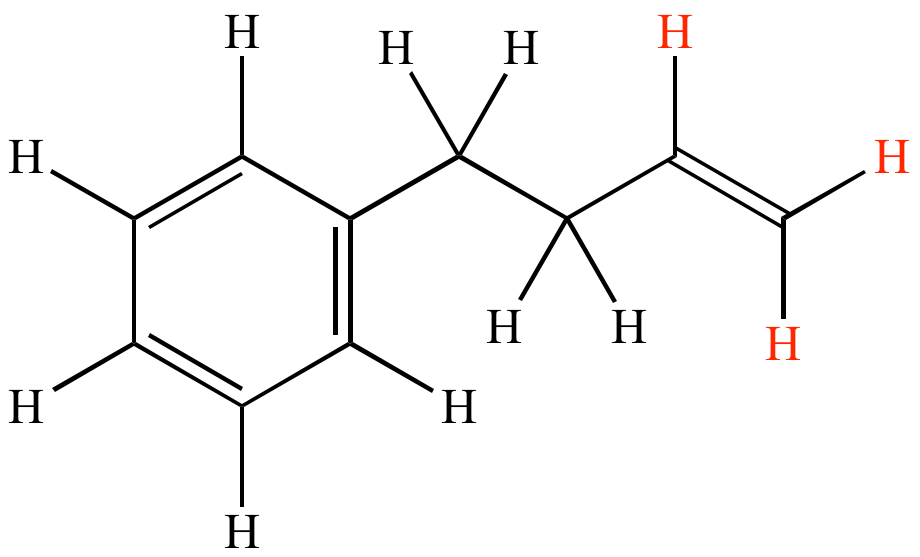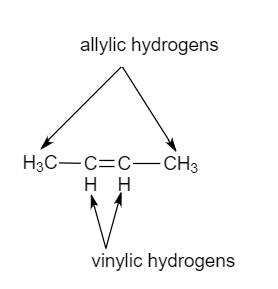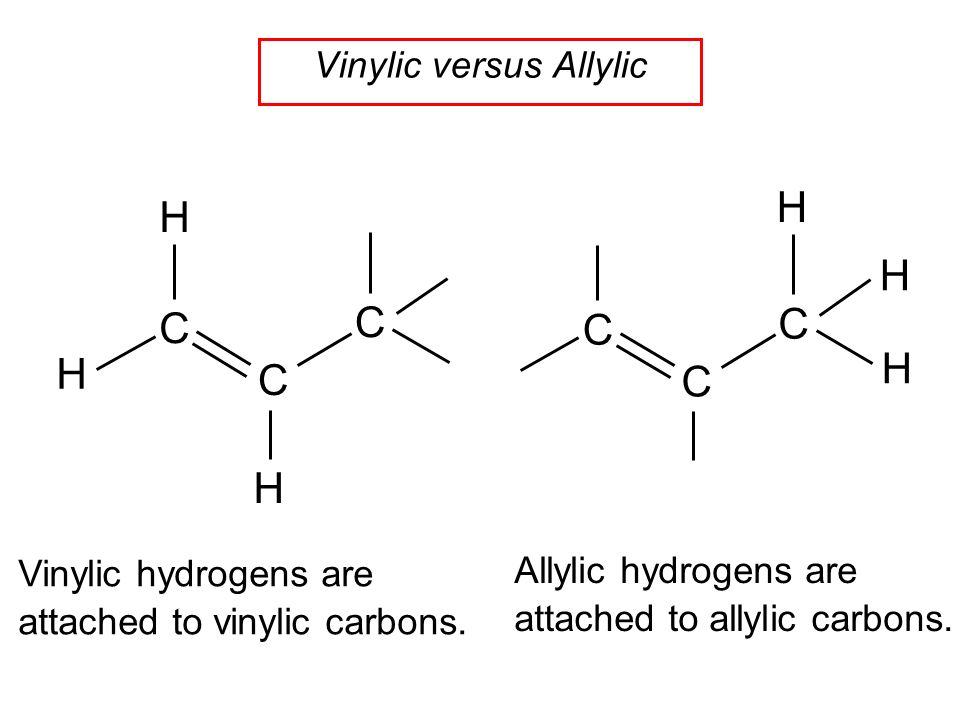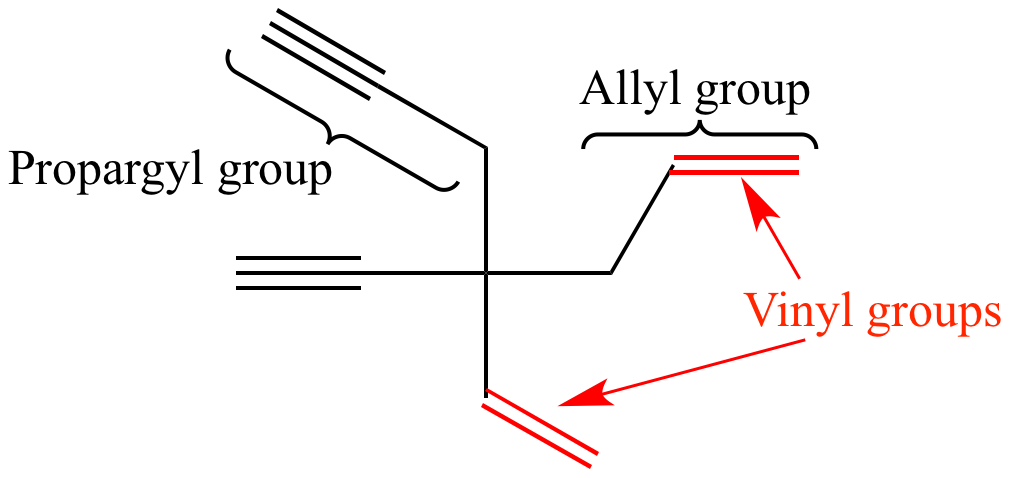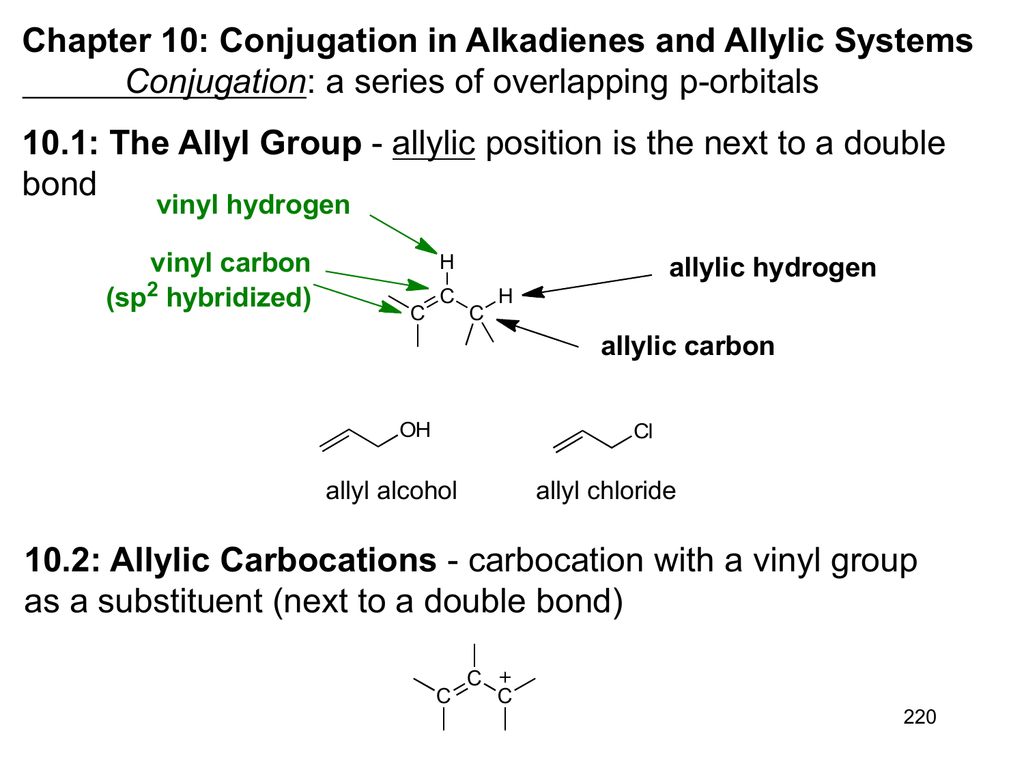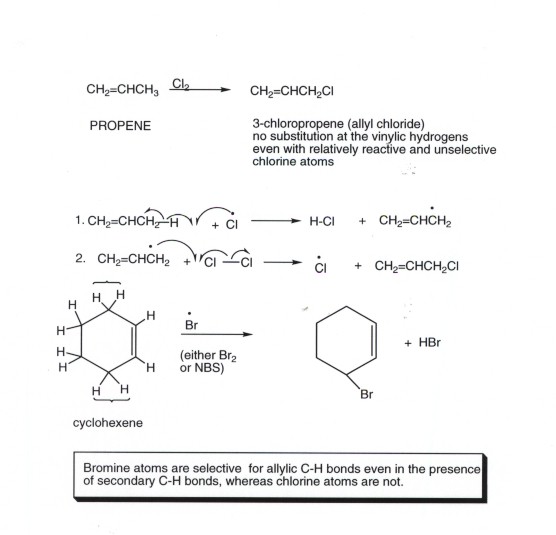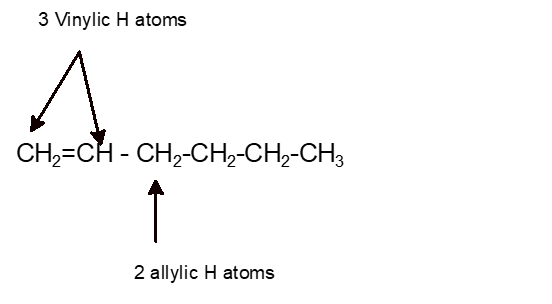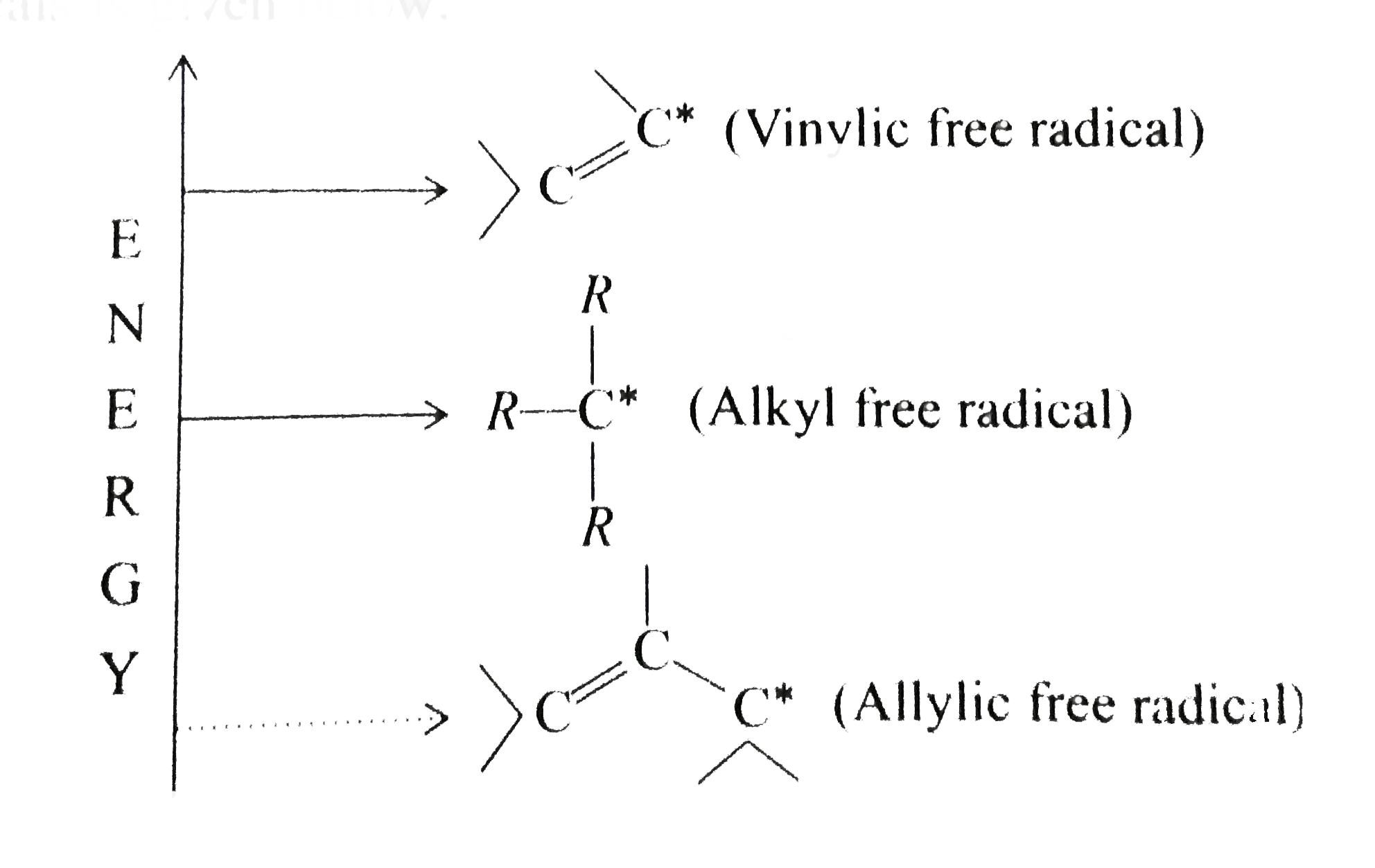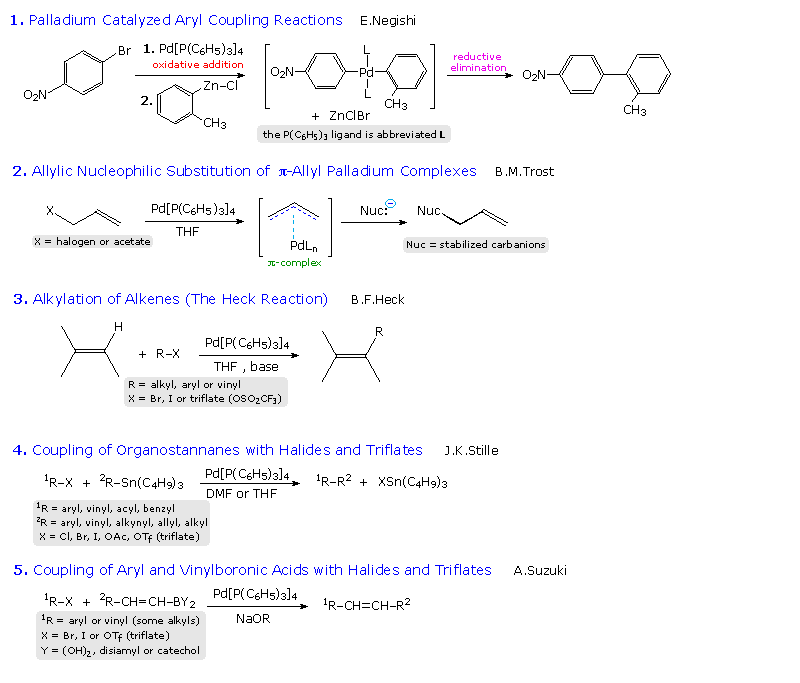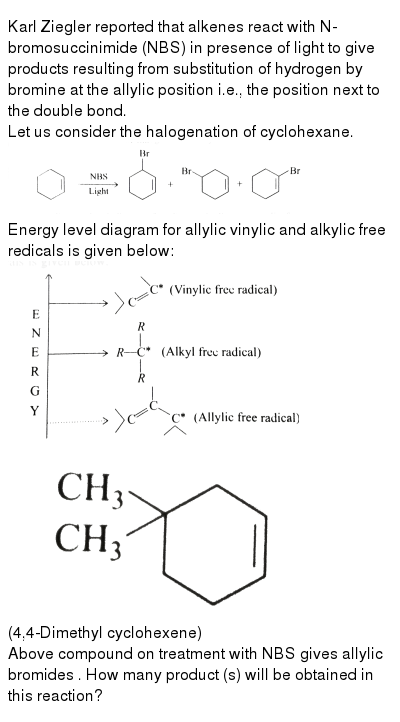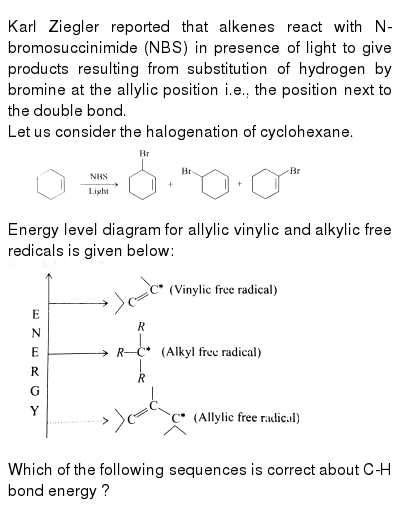Vinylic Vs Allylic Hydrogen

Both groups own a double bond between two carbon atoms where all the other atoms are bonded through single bonds.
Vinylic vs allylic hydrogen. Key difference allyl vs vinyl both allyl and vinyl groups have slightly similar structures with a small variation. Allyl group holds three carbon atoms and five hydrogen atoms on the other hand vinyl group has two carbon atoms and three hydrogen atoms. In chemistry vinyl or ethenyl abbreviated as vi is the functional group with the formula c h ch 2 it is the ethylene iupac ethene molecule h 2 c ch 2 with one fewer hydrogen atom. A hydrogen atom bonded to an sp 2 carbon of an alkene.
The general formula for allyl is r ch 2 ch ch 2 in which the asterisk carbon atom is an allylic carbon atom. It provides plenty of examples including allylic and vinyli. None of the other hydrogens are vinylic. Allyl form a stable carbocation because of the electron delocalization whereas vinylic carbocations are unstable as they lack p character.
Identify the number of allylic and vinylic hydrogens in the pictured molecules. Key difference allylic vs vinylic carbons functional groups are very important in understanding the different physical and chemical properties of organic molecules the terms allylic and vinyl carbons indicate whether the carbon atom is bonded directly or indirectly to a double bond in a molecule. The name is also used for any compound containing that group namely r ch ch 2 where r is any other group of atoms. The allylic carbon is bonded to a carbon atom which is doubly bonded to another carbon atom.
The vinylic hydrogens are shown in red. Allyl indicates a functional group with structural formula h 2 c ch ch 2 r where r is the rest of the molecule it consists of methylene bridge ch 2 in between the vinyl group ch ch 2 and the rest of the molecule therefore allyl group contains sp 2 hybridized vinyl carbon atoms and sp 3 hybridized allyl carbon atom. This organic chemistry video tutorial explains how to determine which carbocation is most stable. The key difference between these two structural components is the number of carbon and hydrogen atoms.
The allylic carbon atom is more reactive than normal. An allylic hydrogen is a hydrogen atom that is bonded to an allylic carbon in an organic molecule. Allyl groups have three carbon atoms and five hydrogen atoms. The key difference between allylic and vinylic carbon is that allylic carbon is the carbon.


